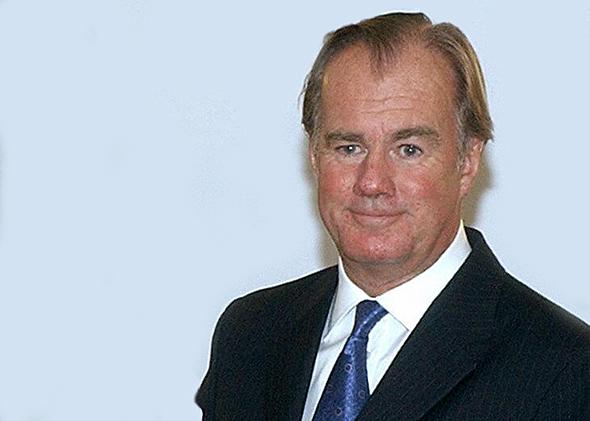America is a land of billionaires, boasting five of the 10 richest people on the planet as of the most recent Forbes 500 list. Then again, we’re a large country, and in per capita terms, we lag behind several smaller states. Many of these—like world leader Monaco (No. 1 per capita, with three billionaires in a population of 35,427)—are true micro-nations, or else they’re St. Kitts and Nevis (No. 2, one billionaire, population 53,051): more of a vacation destination for the rich and less a place where people actually go to earn a fortune. But one country stands out on the list: Sweden (No. 12, 14 billionaires, population 9.56 million).
No single Swede comes close to the epic wealth of a Bill Gates or a Warren Buffett. But Stefan Persson, the chairman, main shareholder, and former longtime CEO of H&M, leads a roster of Swedish billionaires who outpace the U.S. (No. 14) on a per capita basis. In part this is just a bit of a funny coincidence—it’s a fairly small country, after all—but the fact that a famously left-wing country like Sweden can be so rich in billionaires is telling and important.
That’s because a billionaire isn’t just a guy with a well-paying job. To reach that level of stratospheric riches, you probably either need to start a big, successful company or else inherit one from someone who did. And however much people care about inequality, almost every place on Earth would like to be the kind of place where successful new firms are born and raised. The good news about Sweden is that it’s exactly that kind of place. High taxes go to finance cheap health care and education, an excellent system of public transportation, and relatively generous subsidies to low-income households that keep the poverty rate and inequality low. But they haven’t stopped Swedish entrepreneurs from building giant firms like H&M, Ikea, and Tetra Pak.
This reality cuts against a recent critique of the Nordic social model from Daron Acemoglu, James Robinson, and Thierry Verdier that was popular in right-of-center circles. The authors contrasted American-style cutthroat capitalism with Nordic-style cuddly capitalism as two social systems that are compatible with high levels of GDP per capita. The cuddly Nordic system might be better for human welfare, they said, but the American system is better for the world. Their reasoning was that high levels of inequality create financial incentives for innovation; cuddlier nations don’t have those incentives. The authors test this rather schematic model empirically by showing that the U.S. files more patents per capita than any of the egalitarian Nordic countries.
That’s fine, except patents aren’t innovation—counting them up tells you more about a country’s patent policies than about the number of good ideas its people are coming up with. Lots of things that get patented are completely trivial. Or where they’re not trivial, they often aren’t very innovative—Amazon’s infamous 1999 patent on one-click shopping, for example, only looked innovative to the U.S. Patent and Trademark Office because the whole Web still seemed so new at the time. Nobody owns a patent on brick-and-mortar checkout procedures like “have the customers wait in line until a register is free,” because patent law didn’t use to be as promiscuous as it is today. Conversely, lots of important innovations such as “affordable Scandinavian modern design” aren’t patentable.
At the same time, while Scandinavian success stories show that great companies can be born and innovate amid generous welfare states, they do have some cautionary tales for left-wing thinking. The Swedish tax code was substantially reformed in 1990 to be friendlier toward capital accumulation, with a flat rate on investment income. Sweden has no taxes on inheritance or residential property, and its 22 percent corporate income tax rate is far lower than America’s 35 percent. Even after spending cuts by the current center-right government, the Swedish public sector is still about half the total economy (much higher than here), but the taxes that finance it fall more heavily on consumption and less on business investment than in the U.S.
Sweden also has a relatively lightly regulated economy. There are rules about public health and environmental protection, of course. But Sweden is arguably further down the neoliberal path of dismantling purely economic regulations than the U.S. In Stockholm, for example, taxi fares are completely unregulated and for-profit charter schools are common. All things considered, international surveys rank Sweden as a place where it’s easy to do business. Within the U.S., surveys show that licensing rules rather than tax rates are the main driver of local business-friendliness.
It’s much the same in the international context. Regulations that prevent firms from growing big and putting other companies out of business are widespread in many countries, and harm both economywide living standards and billionaire production. France, for example, is considering a ban on free shipping of books to protect its small bookstores from the depredations of Amazon—protections that numerous American retailers in the book industry and beyond would no doubt appreciate. And here in the U.S., the arcane, three-tier liquor distribution system and baroque car dealership rules similarly prevent the most efficient firms from growing and putting the others out of business.
This kind of protectionist regulation has an obvious appeal to incumbents, and the small-business owners it protects are often more sympathetic to it than the wannabe billionaires who’d like to see these rules dismantled. But letting the best firms thrive and grow is what creates both vast fortunes and at least the possibility of broadly shared prosperity. If those parameters are in place, even high taxes and generous social welfare benefits don’t stop great businessmen from building great businesses—or even amassing great sums of money.
